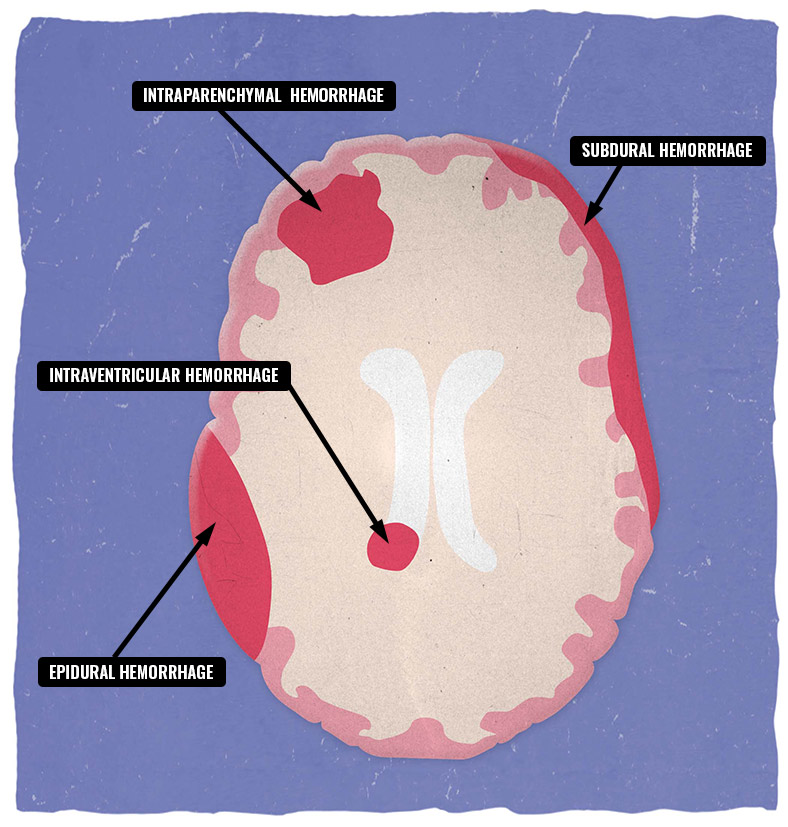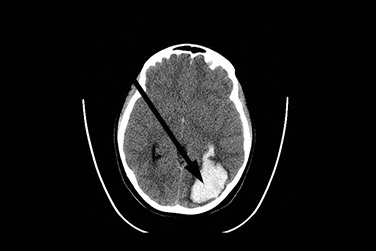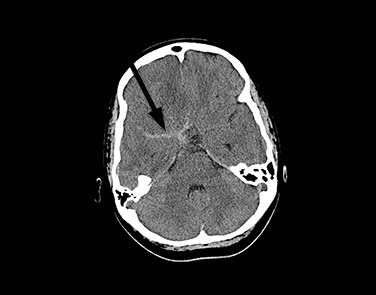Intracranial Hemorrhage
Many children will be seen by a neurosurgeon if they have evidence of bleeding within the skull called intracranial hemorrhage. There are four types of ICH.
- Epidural hematoma is blood accumulated between the skull and outermost covering of the brain.(Hematoma is an accumulation of blood that is on the outside of a blood vessel not inside.)
- Subdural hematoma is blood accumulated on the surface of the brain between the dura and arachnoid mater.
- Subarachnoid hemorrhage is bleeding between the brain and thin tissue that covers the brain. It usually presents with a sharp, sudden headache and can be accompanied by stiff neck, vomiting, altered consciousness and seizures. The headache is frequently in the back of the head or only on one side.
- Intracerebral hemorrhage is bleeding within the brain itself. It may be intraparenchymal(bleeding in brain tissue) or an intraventricular hemorrhage(bleeding into the ventricles of the brain).

Causes of ICH?
The most common cause of blood inside the skull is trauma. This trauma may be as natural as the birth of your child on one extreme to a car collision on the other.
Diagnosing ICH
Important questions that you and your neurosurgeon will be trying to answer include:
- How much unwanted blood is inside the head and does it need to come out?
- What compartment is the blood in: one of the brain coverings or the brain matter?
- What is the cause of the bleeding, trauma, underlying conditions or medication?
- Does your family have a history of bleeding disorders?
- What is the chance that the bleeding will happen again?
Your doctor will use many clues to solve these problems. The way the problem is solved is through history taking, blood work, assessing various pictures of the brain, surgery or time. The outcome for patients depends on many factors such as the extent of the bleed, how quickly it was treated and complications.
 CT scan showing bleeding in the brain tissue.
CT scan showing bleeding in the brain tissue.
 CT scan showing a child with a subarachnoid hemorrhage.
CT scan showing a child with a subarachnoid hemorrhage.
“Intracranial Hemorrhages” by Elea Carey,
published on July 30, 2012
healthline.com/health/extradural-hemorrhage; Oliver, Z.(n.d).
Intracranial hemorrhage. CDEM Study Modules,
retrieved April 2, 2014 from saem.org/

